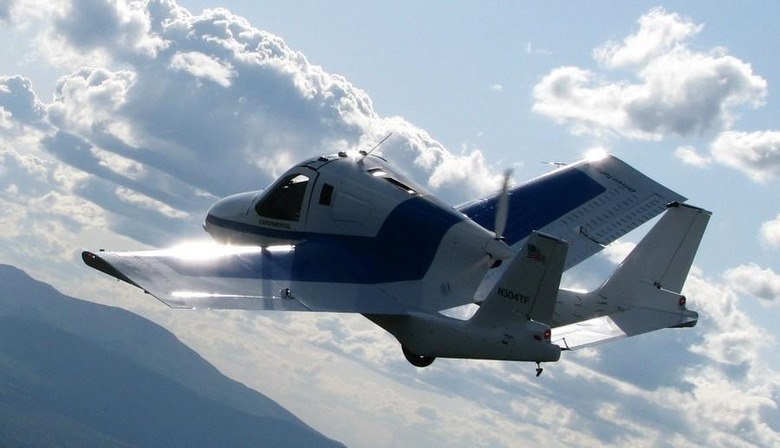Terrafugia's Flying Car Sets 2019 Debut With Tech Upgrade
Flying car company Terrafugia insists it'll launch its first production vehicles in 2019, revealing the latest version of the Transition two-seater this week. Able to convert between a road-going vehicle and a plane, the Transition is getting a cabin upgrade along with a tweaked powertrain, Terrafugia says.
Propulsion is now courtesy of a hybrid-electric motor, Terrafugia has confirmed, which will operate while the vehicle is in drive mode. That will use both an internal combustion engine and a LiFePO4 lithium iron phosphate chemistry battery, which the company says is "much safer than other lithium battery chemistries."
There'll also be a new "Boost" feature, though it'll only be available when the Transition is flying. The throttle will deliver a "brief burst" of additional power for extra acceleration. Exactly how fast that will be is unclear at this stage, though Terrafugia has previously promised top speeds of up to 100 mph in the air, and a cruising range of 400 miles.

Inside, there are now new and upgraded seats, and an fresh user interface, which Terrafugia promises is more intuitive to navigate. There'll also be greater luggage capacity. A whole host of updated safety tech has also been integrated, with the seat belts and airbags improved. Three rearview cameras will deliver a better perspective of what's going on behind the flying car while it's in driving mode.
BRS Aerospace will be providing a full-frame parachute system, meanwhile. That's in effect a huge parachute fixed to the Transition itself, rather than worn by individual parachutes. Should the flying car experience problems while it's in the air, it will be able to deploy its 'chute and stand a better chance of making it safely down to the ground.
While we've heard plenty of ambitious plans from flying car startups in the past, though seen few actually reach anything close to production reality, Terrafugia does have a few advantages. It was acquired by Geely in mid-2017, the same Chinese firm which also owns Volvo. If that backing can do for Terrafugia what the Swedish automaker has achieved with its completely refreshed line-up, the Transition could well be worth watching.
The challenge isn't just technical, of course. Terrafugia will also have to satisfy not one but two different safety organizations: the FAA, which sees Transition as a plane, and the NHTSA, which sees it as a car. Getting that sorted will help pave the way for what's arguably more interesting: the Terrafugia TF-2, which will use vertical take-off and landing (VTOL).
